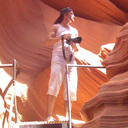0 Likes
O atual edifício foi erguido a partir de 1517 em substituição a uma igreja gótica anterior. O autor do projeto em estilo manuelino foi, provavelmente, Francisco de Arruda. A abertura ao culto foi realizada em 1537, com as obras ainda inacabadas. Da época manuelina data a estrutura geral do templo, uma igreja-fortaleza ameiada de três navescoberta com abóbada nervurada. O nártex de entrada sob a torre e o portal lateral também são manuelinos. O portal principal, de Miguel de Arruda, data de 1550 e tem caráter renascentista.
Em 1570 a igreja passou a ser sede da diocese de Elvas, ascendendo assim a catedral (Sé). Nos séculos XVII e XVIII foram realizadas inúmeras modificações estilísticas que enriqueceram o interior. Na época do bispo D. Lourenço de Lencastre (1759-1780), em particular, a Sé ganhou vários altares em mármore de Estremoz, como o da capela-mor realizado por José Francisco de Abreu. Também nessa época foi realizada a obra de talha dourada do órgão, atribuído ao italiano Pascoal Caetano Oldovini. Destaca-se também a sala do cabido, construída no século XVII.
...





The site, extensively fortified from the 17th to 19th centuries, represents the largest bulwarked dry-ditch system in the world. Within its walls, the town contains barracks and other military buildings as well as churches and monasteries. While Elvas contains remains dating back to the 10th century ad, its fortification began when Portugal regained independence in 1640. The fortifications designed by Dutch Jesuit padre Cosmander represent the best surviving example of the Dutch school of fortifications anywhere. The site also contains the Amoreira aqueduct, built to enable the stronghold to withstand lengthy sieges.UNESCO